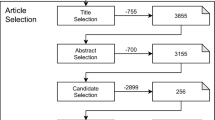Abstract
[Context] Requirements quality can have a substantial impact on the effectiveness and efficiency of using requirements artifacts in a development process. Quantifiers such as “at least”, “all”, or “exactly” are common language constructs used to express requirements. Quantifiers can be formulated by affirmative phrases (“At least”) or negative phrases (“Not less than”). [Problem] It is long assumed that negation in quantification negatively affects the readability of requirements, however, empirical research on these topics remains sparse. [Principal Idea] In a web-based experiment with 51 participants, we compare the impact of negations and quantifiers on readability in terms of reading effort, reading error rate and perceived reading difficulty of requirements. [Results] For 5 out of 9 quantifiers, our participants performed better on the affirmative phrase compared to the negative phrase. Only for one quantifier, the negative phrase was more effective. [Contribution] This research focuses on creating an empirical understanding of the effect of language in Requirements Engineering. It furthermore provides concrete advice on how to phrase requirements.
Access this chapter
Tax calculation will be finalised at checkout
Purchases are for personal use only
Similar content being viewed by others
References
Atoum, I.: A novel framework for measuring software quality-in-use based on semantic similarity and sentiment analysis of software reviews. J. King Saud Univ. Comput. Inf. Sci. 32(1), 113–125 (2020)
Berry, D.M., Kamsties, E.: The syntactically dangerous all and plural in specifications. IEEE Softw. 22(1), 55–57 (2005)
Chen, H., Cohen, P., Chen, S.: How big is a big odds ratio? Interpreting the magnitudes of odds ratios in epidemiological studies. Commun. Stat. Simul. Comput. 39(4), 860–864 (2010)
Christensen, K.R.: Negative and affirmative sentences increase activation in different areas in the brain. J. Neurolinguist. 22(1), 1–17 (2009)
Cirilo, R.K., Foss, D.J.: Text structure and reading time for sentences. J. Verbal Learn. Verbal Behav. 19(1), 96–109 (1980)
Cohen, J.: Statistical Power Analysis for the Behavioral Sciences. Routledge, New York (2013)
Femmer, H., Vogelsang, A.: Requirements quality is quality in use. IEEE Softw. 36(3), 83–91 (2019)
Femmer, H., Mèndez Fernàndez, D., Wagner, S., Eder, S.: Rapid quality assurance with requirements smells. J. Syst. Softw. 123, 190–213 (2017)
Glanzberg, M.: Quantifiers, pp. 794–821. Oxford University Press, Oxford (2006)
Graesser, A.C., Hoffman, N.L., Clark, L.F.: Structural components of reading time. J. Verbal Learn. Verbal Behav. 19(2), 135–151 (1980)
Keenan, E.L., Stavi, J.: A semantic characterization of natural language determiners. Linguist. Philos. 9(3), 253–326 (1986)
Klare, G.R.: The measurement of readability: useful information for communicators. ACM J. Comput. Doc. 24(3), 107–121 (2000)
MacKay, D.G.: To end ambiguous sentences. Percept. Psychophys. 1(5), 426–436 (1966)
Wohlin, C., Runeson, P., Höst, M., Ohlsson, M.C., Regnell, B., Wesslén, A.: Experimentation in Software Engineering: An Introduction. Kluwer Academic Publishers, Norwell (2000)
Author information
Authors and Affiliations
Corresponding authors
Editor information
Editors and Affiliations
Rights and permissions
Copyright information
© 2020 Springer Nature Switzerland AG
About this paper
Cite this paper
Winter, K., Femmer, H., Vogelsang, A. (2020). How Do Quantifiers Affect the Quality of Requirements?. In: Madhavji, N., Pasquale, L., Ferrari, A., Gnesi, S. (eds) Requirements Engineering: Foundation for Software Quality. REFSQ 2020. Lecture Notes in Computer Science(), vol 12045. Springer, Cham. https://doi.org/10.1007/978-3-030-44429-7_1
Download citation
DOI: https://doi.org/10.1007/978-3-030-44429-7_1
Published:
Publisher Name: Springer, Cham
Print ISBN: 978-3-030-44428-0
Online ISBN: 978-3-030-44429-7
eBook Packages: Computer ScienceComputer Science (R0)




